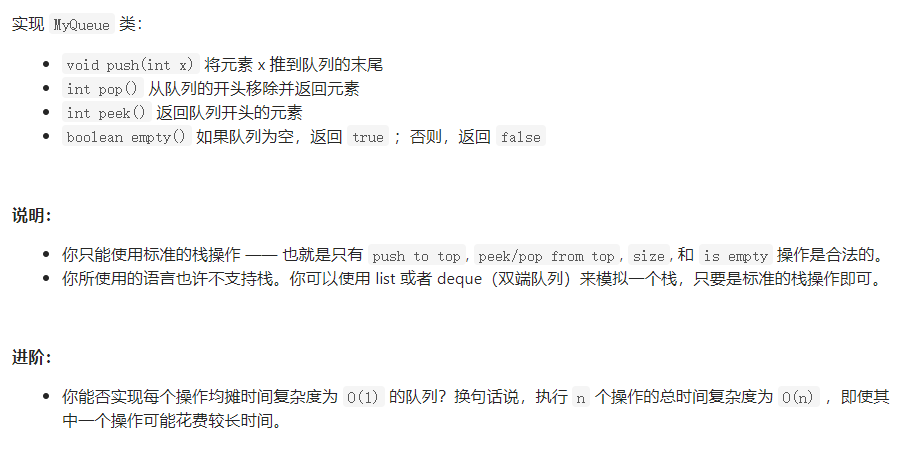LeetCode刷题实战232:用栈实现队列
Implement a first in first out (FIFO) queue using only two stacks. The implemented queue should support all the functions of a normal queue (push, peek, pop, and empty).

示例
输入:
["MyQueue", "push", "push", "peek", "pop", "empty"]
[[], [1], [2], [], [], []]
输出:
[null, null, null, 1, 1, false]
解释:
MyQueue myQueue = new MyQueue();
myQueue.push(1); // queue is: [1]
myQueue.push(2); // queue is: [1, 2] (leftmost is front of the queue)
myQueue.peek(); // return 1
myQueue.pop(); // return 1, queue is [2]
myQueue.empty(); // return false
解题
思路: 由于队列是先进先出的,而栈是先进后出的,所以要用2个栈来实现队列的入队出队功能,队列的入队功能与栈的一样,出队时,先将第一个栈中的元素全部弹出,并倒入到第二个栈中,将第二个栈中栈顶元素弹出,并将stack2中剩下的元素倒回到stack1中,即实现一次出队。
class MyQueue {
public:
/** Initialize your data structure here. */
stack<int> s1, s2;
MyQueue() {
}
/** Push element x to the back of queue. */
void push(int x) {
while(!s2.empty()) {
s1.push(s2.top());
s2.pop();
}
s2.push(x);
while(!s1.empty()) {
s2.push(s1.top());
s1.pop();
}
}
/** Removes the element from in front of queue and returns that element. */
int pop() {
int a = s2.top();
s2.pop();
return a;
}
/** Get the front element. */
int peek() {
return s2.top();
}
/** Returns whether the queue is empty. */
bool empty() {
return s2.empty();
}
};
